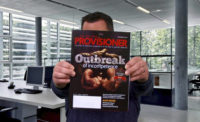There has been a lot of talk, hype and hand-wringing over the U.S. Department of Agriculture’s Food Safety and Inspection Service’s (FSIS) validation data. The ultimate question about validation: Is it a big deal?
That is the question I got from a new client the other day. This is a new facility with a new management team, but lots of experts. As a team they have expertise in Global Food Safety Initiative (GFSI) auditing under BRC, SQF, ISO 22,000, some of the best production people in the business, multiple food-safety consultants that specialize in one area or another, etc., and yet no one really seemed comfortable discussing validation.
My answer to them was that they had already built their validation program into their food safety and quality systems. The room went silent — never a good sign for a consultant.
So I explained: When you design a new system to make a product, Step One isn’t designing the HACCP system. Step One is actually figuring out how you want to make that product, what equipment you want to use, how you are going to be profitable making said product, etc. After you have put together your production plan, then the HACCP principles kick in. At this point the auditor types started frowning while the production folks started smiling.
I quickly explained that until you know what you want to make and how you want to make it, there is no way of identifying what can really go wrong or how to avoid system failures. Frowns were quickly turning into scowls on one side of the table, while the other side was all giant smiles. My guess was they had developed a food-safety system and were trying to wrap production around it, and it wasn’t working — hence the need for my presence.
We then took a step back and I asked, “Exactly how did you lay out your plans and programs both for production and food safety?”
As it turns out, they had indeed built a food-safety system before developing production systems. The basic food-safety program was hundreds of pages of programs and requirements. They were collecting more than 200 food-safety records a day in a small facility, and they now wanted to put a validation program together. Among their headaches: trouble with NRs for paperwork not being done and consistent production stoppages.
I stopped the conversation and recommended to the owner that we start from scratch. He asked if I would like his production supervisor to give me a tour. When we got back from the facility tour, there was no one in the conference room but the owner and the facility superintendent — meaning we were starting from scratch.
We started by determining what he wanted to produce, whom his target customers were and what his current capacity for production was. We identified about 15 good manufacturing practices that he was going to implement, because, well, they are good manufacturing practices. We then developed his SSOP. We were going to be able to keep the place clean and in good repair while making products to his customers’ specifications. Now we had to figure out what he needed to do to make it safe.
We all went down and re-walked the production area from the receiving dock to the shipping dock. The flow diagram we developed was clear, concise and, to be honest, elegant. There just weren’t that many actual steps. We then went to work on the food-safety program. Each step was analyzed for hazards. We came to an antimicrobial intervention that a customer required and the USDA has basically mandated and discussed the best approach to take in the facility. After much discussion, an intervention (organic acid) was selected based on the expected results and cost.
Validation had started. The documents related to the intervention (left for the facility by the chemical company’s rep) that was selected were set aside for later use.
We then discussed the best way to monitor the intervention and how we were going to verify that the system was in control. We developed some straight-forward monitoring procedures. To determine the frequency, we went to Mil Spec 105e for its sampling for attributes tables. While it isn’t as sexy as the statistical jargon thrown around food-safety circles in today’s audit world, it has the benefit of being validated by the courts. There have been numerous cases in which sampling using its frequencies has been upheld as statistically sound. We based the monitoring frequency on the three basic categories — tightened, normal and reduced — obviously starting at the tightened frequency and moving to the others according to the Mil Spec’s instructions.
We finished the hazard analysis, developed the HACCP, put together the decision documents and went over them to create our validation program. Using the antimicrobial intervention as an example, we identified the critical parameter we needed to meet and the supporting parameters. In this case it is a spray. The critical parameter is getting the antimicrobial in contact with the potential contamination. The supporting parameters are concentration ranges, system pressure, mixing temperatures, etc. We had already gone over all of this when we built our monitoring procedures.
We don’t need to validate our monitoring frequencies; we know they are valid thanks to the courts. The same holds true for regulatory requirements or compliance guidelines. All we need to validate is that we can implement them. We increased our direct observations to a tightened frequency, which will generate sufficient data for review and determination.
The real question then was, how do we know that it works — that we will get the same results that the scientist who wrote our supporting paper did? We developed a sampling program that is very robust for 15 days, then we will evaluate the data we have and either adjust our process or reduce the sampling frequencies, repeating the review process at the initial three weeks, then at 30 days, then 60 and 90. Assuming no derogatory findings and only minor adjustments to our system, we can generate a validation report. The funny thing is, we are required to do testing by the USDA and our customers, so we can use those results to validate our system. We can also use any NRs, MOIs, FSIS sampling, etc. generated by our USDA inspection teams as part of our decisions. That reduces the actual number of samples we are taking over the next 90 days.
In the end, we came up with a very straight-forward food-safety program that is focused on the critical points in our processes and the critical parameters at those points that we need to achieve to make a safe product. We also have a production plan that will generate profits. The final piece of the puzzle was the validation program. As we complete it we will know that our program is valid, as will our customers and regulators.
For those of you using the same basic plans you have had in place for years, instead of going forward to gather validation data, look back. You have a ton of records showing your system works. (If you don’t either the USDA hasn’t been in your plant, or someone isn’t meeting record keeping requirements!) Pull your historical data together to support your plan. When your inspection team asks for micro results and you provide them with the results from the last year, including results from the samples they have taken, and they are all negative, you have a pretty good start to say that your program is valid. The one critical thing you MUST do is pull it all together in a coherent document. Don’t just point them at your file cabinet.
Pull the papers together — there will be a lot of them — write your cover letter explaining your validation review and make a copy to keep offsite. This packet of data MUST be kept for as long as you are using the HACCP system that it supports as valid.
So to answer the question “Is validation a big deal?” The answer is, yes and no. Yes, it is, because you have to operate under a valid food-safety system. However, no it is not, because you are already proving it; you just need to do some typing! NP







Report Abusive Comment